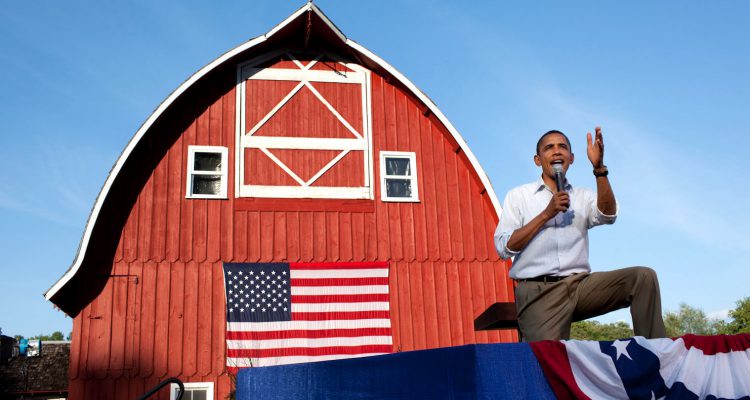By: Patrick W. Zimmerman
Which is just weird.
“Middle America.” “Small town values.” “Main Street.” These reified terms have been embodied in the political theatre of Town Hall meetings, the “retail politics” of Iowa and New Hampshire, and Plumbers named Joe. In politico-talk, these stock phrases tend to be codes referencing the idea that rural America is more politically engaged than those multicultural, distracted, libertine cities.
And there is some evidence to support that ideology…at least there used to be.
It was established decades ago as a political truism that voter turnout in cities was lower than in rural areas.1 This has been used to partially explain the rise of conservative populism in the last decade, a revenge of the forgotten countryside against arrogant (but disengaged) urban elites.
Sounds like a nice sweeping demographic mechanism behind a lot of the political challenges to the postwar sociopolitical order. But does this trend still hold true in the US?
The question
Is there a correlation between population density and voter turnout in the US for Congressional Elections when controlling for population age?
The short-short version
No, not at all. Except in the Northeast, where it has…then, clearly not driven a conservative backlash into power at either the state or national level. Last time we checked, New England and the Mid-Atlantic were still Democratic strongholds.
No, seriously, when broken down into the US Census’ 4 regions2 and controlling for senior citizen population (a known factor to increase voter turnout – grandma votes more than you do, kid), the Northeast has a significant negative correlation between voter turnout and population density, and the other three regions show zilch. Nada. Nothin’
So what’s that mean? For some reason, the less dense the congressional district, the higher the turnout for congressional elections, there and nowhere else.
Methodology
Vote totals in each of the last 4 congressional elections (that is to say, those conducted under the same map) were compared to population density in 2013-2017 as estimated by the 5-year American Community Survey. Turnout was calculated by dividing those total voters by the Census’ CVAP (Citizen Voting Age Population).
Pennsylvania’s 2018 elections were omitted from the dataset because of the court-mandated redistricting of its a href=”https://www.principallyuncertain.com/pennsylvania-congressional-districts/” target=”_blank” rel=”noopener noreferrer”>gerrymandered map, and no special elections were considered. States that do not bother to count ballots for unopposed candidates (like Florida) also had those vote totals not considered.
We used population over 65 from the Census ACS and controlled for multiple tests with a Bonferroni correction. Interestingly, controlling for retired people made the Northeast even more of a significant outlier.
The results
Here’s the breakdown of correlations for each of the four regions of the US, highlighting just how much of an outlier the Northeast is.
| Voter turnout correlation to population density, controlling for 65+ population | |||
|---|---|---|---|
| Region | Correlation (R) | Significance | Meaningful? |
| Northeast | -0.581 | p=0.000000124 | Negatively correlated |
| Midwest | -0.136 | p>0.1 | No relationship |
| West | -0.083 | p>0.1 | No relationship |
| South | -0.081 | p>0.1 | No relationship |
For those of you who see things better graphically, the scatterplots also make things pretty obvious. One and only one of these looks anything but totally random.
Mouseover for details.
Mouseover for details.
Mouseover for details.
Mouseover for details.
So what’s going on in Yankeeland?
We’re just as puzzled as you are, and from this data, we can only come up with a few conjectures. There are more (delicious) questions than answers, really.
Potential causes:
- Historic settlement patterns. The Northeast was more densely settled, earlier, than the rest of the country, it industrialized first and thus started to concentrate its population in cities as opposed to rural areas earlier than anywhere else. It was also the focus for most of the immigration into the US prior to the Second World War.
- Cities are also closer together in the Northeast, connected by a denser, more heavily used transportation system. This is, of course, related to the above point.
- Small-scale vs. large-scale agriculture. While there ARE large firms in the agricultural sector in the Northeast (particularly in New York and Pennsylvania), rural areas are not as dominated by big agribusiness in the same way as they are in, say, the Upper Midwest or California.
- Migration patterns. As a follow on to the immigration mentioned in the first point, people have tended to flow out of the Northeast towards the South and West, though this wouldn’t be a satisfactory explanation for why we don’t see the same voting trends in the Midwest.
- The Northeast is very white compared to the South and West, though (as above), this begs the question of why the Midwest doesn’t show the same turnout patterns.
It’s probably not anything to do with:
- Gerrymandering, since it’s tough to believe that the Northeast is significantly more gerrymandered than anywhere else (for instance, North Carolina’s map is currently being considered by the Supreme Court).
- Because we controlled for that.
So, what’s next? Time to dig into potential causes.
Notes:
1 See Alan D. Monroe, “Urbanism and Voter Turnout: A Note on Some Unexpected Findings,” American Journal of Political Science, Vol 21, No 1, Feb 1977, pp 71-78 and Gary G. Preuss, “The Effects of Density and Urban Residence on Voter Turnout,” Population and Environment, Vol 4, No 4, Winter 1981, pp 246-265.^
2 Yes, while these have some oddities (Delaware is in the South? Really?), the great advantage of using their categories is that we get to direct all flamewars about regional identity to the Census. If you think Kansas shouldn’t be included in the Midwest, take it up with Wilbur Ross.^

No Comments on "Small town America does not have higher voter turnout than cities do.…except in the Northeast"